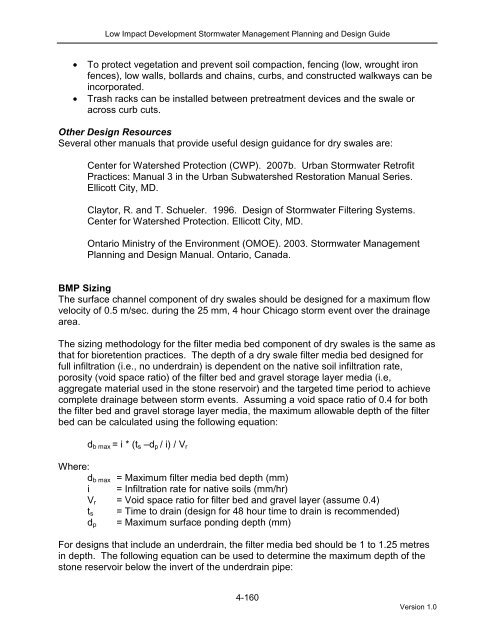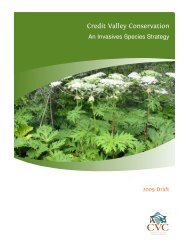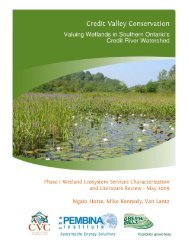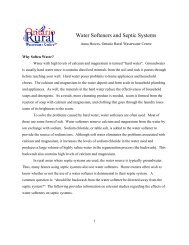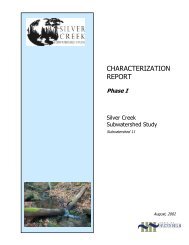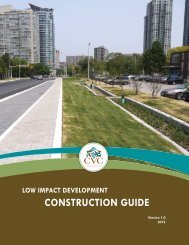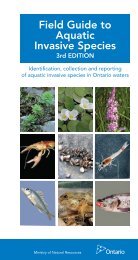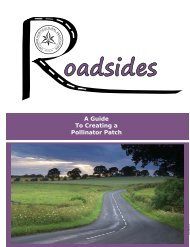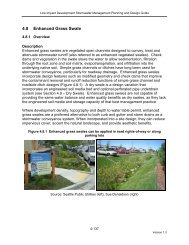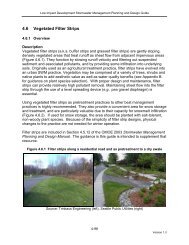Section 4.9 - Dry Swales - Sustainable Technologies Evaluation ...
Section 4.9 - Dry Swales - Sustainable Technologies Evaluation ...
Section 4.9 - Dry Swales - Sustainable Technologies Evaluation ...
Create successful ePaper yourself
Turn your PDF publications into a flip-book with our unique Google optimized e-Paper software.
Low Impact Development Stormwater Management Planning and Design Guide<br />
• To protect vegetation and prevent soil compaction, fencing (low, wrought iron<br />
fences), low walls, bollards and chains, curbs, and constructed walkways can be<br />
incorporated.<br />
• Trash racks can be installed between pretreatment devices and the swale or<br />
across curb cuts.<br />
Other Design Resources<br />
Several other manuals that provide useful design guidance for dry swales are:<br />
Center for Watershed Protection (CWP). 2007b. Urban Stormwater Retrofit<br />
Practices: Manual 3 in the Urban Subwatershed Restoration Manual Series.<br />
Ellicott City, MD.<br />
Claytor, R. and T. Schueler. 1996. Design of Stormwater Filtering Systems.<br />
Center for Watershed Protection. Ellicott City, MD.<br />
Ontario Ministry of the Environment (OMOE). 2003. Stormwater Management<br />
Planning and Design Manual. Ontario, Canada.<br />
BMP Sizing<br />
The surface channel component of dry swales should be designed for a maximum flow<br />
velocity of 0.5 m/sec. during the 25 mm, 4 hour Chicago storm event over the drainage<br />
area.<br />
The sizing methodology for the filter media bed component of dry swales is the same as<br />
that for bioretention practices. The depth of a dry swale filter media bed designed for<br />
full infiltration (i.e., no underdrain) is dependent on the native soil infiltration rate,<br />
porosity (void space ratio) of the filter bed and gravel storage layer media (i.e,<br />
aggregate material used in the stone reservoir) and the targeted time period to achieve<br />
complete drainage between storm events. Assuming a void space ratio of 0.4 for both<br />
the filter bed and gravel storage layer media, the maximum allowable depth of the filter<br />
bed can be calculated using the following equation:<br />
d b max = i * (t s –d p / i) / V r<br />
Where:<br />
d b max = Maximum filter media bed depth (mm)<br />
i = Infiltration rate for native soils (mm/hr)<br />
V r = Void space ratio for filter bed and gravel layer (assume 0.4)<br />
t s = Time to drain (design for 48 hour time to drain is recommended)<br />
= Maximum surface ponding depth (mm)<br />
d p<br />
For designs that include an underdrain, the filter media bed should be 1 to 1.25 metres<br />
in depth. The following equation can be used to determine the maximum depth of the<br />
stone reservoir below the invert of the underdrain pipe:<br />
4-160<br />
Version 1.0


